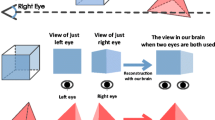Abstract
Many target tracking tasks require high spatial and temporal precision. High frame rate imaging at high spatial resolution is commonly used in these applications, but this approach is expensive and generates large amounts of data which can complicate implementation. When tracking a single object in motion, almost all of this information is unused. A technique has been developed to exploit this sparsity and track motion with a long exposure where absolute timing is encoded by modulating the exposure over time according to a de Bruijn sequence. This technique has been implemented in the Desert Fireball Network to track bright meteors entering the Earth’s atmosphere for orbit determination and successful meteorite recovery. An alternate proof of concept implementation was also developed demonstrating tracking at 36 megapixels and 1000 Hz using a consumer camera with an inexpensive modulated light source and retroreflective target. The technique could be applied to other tracking problems requiring high temporal and spatial precision such as particle image velocimetry and space surveillance and tracking.










Similar content being viewed by others
Change history
27 February 2020
The articles listed below were published in Issue January 2020, Issue 1, instead of Issue February 2020, Issues 1–2.
References
Hitomi, Y., Gu, J., Gupta, M., Mitsunaga, T., Nayar, S.K.: Video from a single coded exposure photograph using a learned over-complete dictionary. In: 2011 IEEE International Conference on Computer Vision (ICCV), pp. 287–294. IEEE (2011)
Ceplecha, Z.: Photographic Geminids 1955. Bull. Astron. Inst. Czechoslov. 8, 51 (1957)
Ceplecha, Z., Rajchl, J.: Programme of fireball photography in Czechoslovakia. Bull. Astron. Inst. Czechoslov. 16, 15 (1965)
Halliday, I., Blackwell, A., Griffin, A.: The Innisfree meteorite and the Canadian camera network. J. R. Astron. Soc. Can. 72, 15–39 (1978)
McCrosky, R.E., Boeschenstein, J.H.: The prairie meteorite network. Opt. Eng. 3(4), 304127 (1965)
Bettonvil, F.C.: Remote and automatic small-scale observatories: experience with an all-sky fireball patrol camera. In: SPIE Astronomical Telescopes+ Instrumentation, pp. 91,473U–91,473U. International Society for Optics and Photonics (2014)
Rigaud, F., Jegouzo, I., Gaudemard, J., Vaubaillon, J.: Control and protection of outdoor embedded camera for astronomy. In: SPIE Astronomical Telescopes + Instrumentation, pp. 84462S–84462S. International Society for Optics and Photonics (2012)
Raskar, R., Agrawal, A., Tumblin, J.: Coded exposure photography: motion deblurring using fluttered shutter. ACM Trans. Graph. 25(3), 795–804 (2006). https://doi.org/10.1145/1141911.1141957
Llull, P., Liao, X., Yuan, X., Yang, J., Kittle, D., Carin, L., Sapiro, G., Brady, D.J.: Coded aperture compressive temporal imaging. Opt. Express 21(9), 10526–10545 (2013)
Flye-Sainte Marie, C.: Solution to problem number 48. L’Intermédiaire des Math. 1, 107–110 (1894)
de Bruijn, N.G., Erdős, P.: A combinatorial problem. Koninklijke Nederlandse Akademie v. Wetenschappen 49(49), 758–764 (1946)
van Aardenne-Ehrenfest, T., de Bruijn, N.G.: Circuits and trees in oriented linear graphs. Simon Stevin Wis-en Natuurkundig Tijdschrift 28, 203 (1951)
Fredricksen, H.: A survey of full length nonlinear shift register cycle algorithms. SIAM Rev. 24(2), 195–221 (1982)
Howie, R.M., Paxman, J., Bland, P.A., Towner, M.C., Sansom, E.K., Devillepoix, H.A.R.: Submillisecond fireball timing using de Bruijn timecodes. Meteorit. Planet. Sci. (2017). https://doi.org/10.1111/maps.12878
Mitchell, C.J., Etzion, T., Paterson, K.G.: A method for constructing decodable de Bruijn sequences. IEEE Trans. Inf. Theory 42(5), 1472–1478 (1996)
LC-Tec: Fast Optical Shutter Series (2018). http://www.lc-tec.se/products/fast-optical-shutters/. Accessed Sept 2018
Bland, P., Spurný, P., Bevan, A., Howard, K., Towner, M., Benedix, G., Greenwood, R., Shrbený, L., Franchi, I., Deacon, G., et al.: The Australian desert fireball network: a new era for planetary science. Aust. J. Earth Sci. 59(2), 177–187 (2012)
Devillepoix, H.A.R., Sansom, E.K., Bland, P.A., Towner, M.C., Cupák, M., Howie, R.M., Jansen-Sturgeon, T., Cox, M.A., Hartig, B.A.D., Benedix, G.K., Paxman, J.P.: The dingle dell meteorite: a halloween treat from the main belt. Meteorit. Planet. Sci. (2018). https://doi.org/10.1111/maps.13142
Howie, R.M., Paxman, J., Bland, P.A., Towner, M.C., Cupak, M., Sansom, E.K., Devillepoix, H.A.R.: How to build a continental scale fireball camera network. Exp. Astron. (2017). https://doi.org/10.1007/s10686-017-9532-7
Bland, P., Towner, M., Sansom, E., Devillepoix, H., Howie, R., Paxman, J., Cupak, M., Benedix, G., Cox, M., Jansen-Sturgeon, T., et al.: Fall and recovery of the murrili meteorite, and an update on the desert fireball network. In: LPI Contributions vol. 1921 (2016)
Meteoritical Society: Dingle Dell. Meteoritical Bulletin 106 (2017). http://www.lpi.usra.edu/meteor/metbull.php?code=62546. Accessed Sept 2018
Meier, M.: Meteoriteorbits. info-tracking all known meteorites with photographic orbits. In: Lunar and Planetary Science Conference, vol. 48 (2017)
Ceplecha, Z.: Geometric, dynamic, orbital and photometric data on meteoroids from photographic fireball networks. Bull. Astron. Inst. Czechoslov. 38, 222–234 (1987)
Borovicka, J.: The comparison of two methods of determining meteor trajectories from photographs. Bull. Astron. Inst. Czechoslov. 41, 391–396 (1990)
Gural, P.S.: A new method of meteor trajectory determination applied to multiple unsynchronized video cameras. Meteorit. Planet. Sci. 47(9), 1405–1418 (2012)
Ceplecha, Z., Revelle, D.O.: Fragmentation model of meteoroid motion, mass loss, and radiation in the atmosphere. Meteorit. Planet. Sci. 40(1), 35–54 (2005)
Fries, M., Fries, J.: Doppler weather radar as a meteorite recovery tool. Meteorit. Planet. Sci. 45(9), 1476–1487 (2010)
Jenniskens, P., Fries, M.D., Yin, Q.Z., Zolensky, M., Krot, A.N., Sandford, S.A., Sears, D., Beauford, R., Ebel, D.S., Friedrich, J.M., et al.: Radar-enabled recovery of the Sutter’s Mill meteorite, a carbonaceous chondrite regolith breccia. Science 338(6114), 1583–1587 (2012)
Acknowledgements
The authors wish to thank the generous observatory hosts and volunteers assisting with camera maintenance and meteorite recovery that have made the Desert Fireball Network possible. The authors have no conflicts of interest to declare.
Author information
Authors and Affiliations
Corresponding author
Additional information
Publisher's Note
Springer Nature remains neutral with regard to jurisdictional claims in published maps and institutional affiliations.
This research was supported by the Australian Research Council through the Australian Laureate Fellowships scheme and receives institutional support from Curtin University.
Rights and permissions
About this article
Cite this article
Howie, R.M., Paxman, J., Bland, P.A. et al. Absolute time encoding for temporal super-resolution using de Bruijn coded exposures. Machine Vision and Applications 31, 1 (2020). https://doi.org/10.1007/s00138-019-01050-8
Received:
Revised:
Accepted:
Published:
DOI: https://doi.org/10.1007/s00138-019-01050-8




